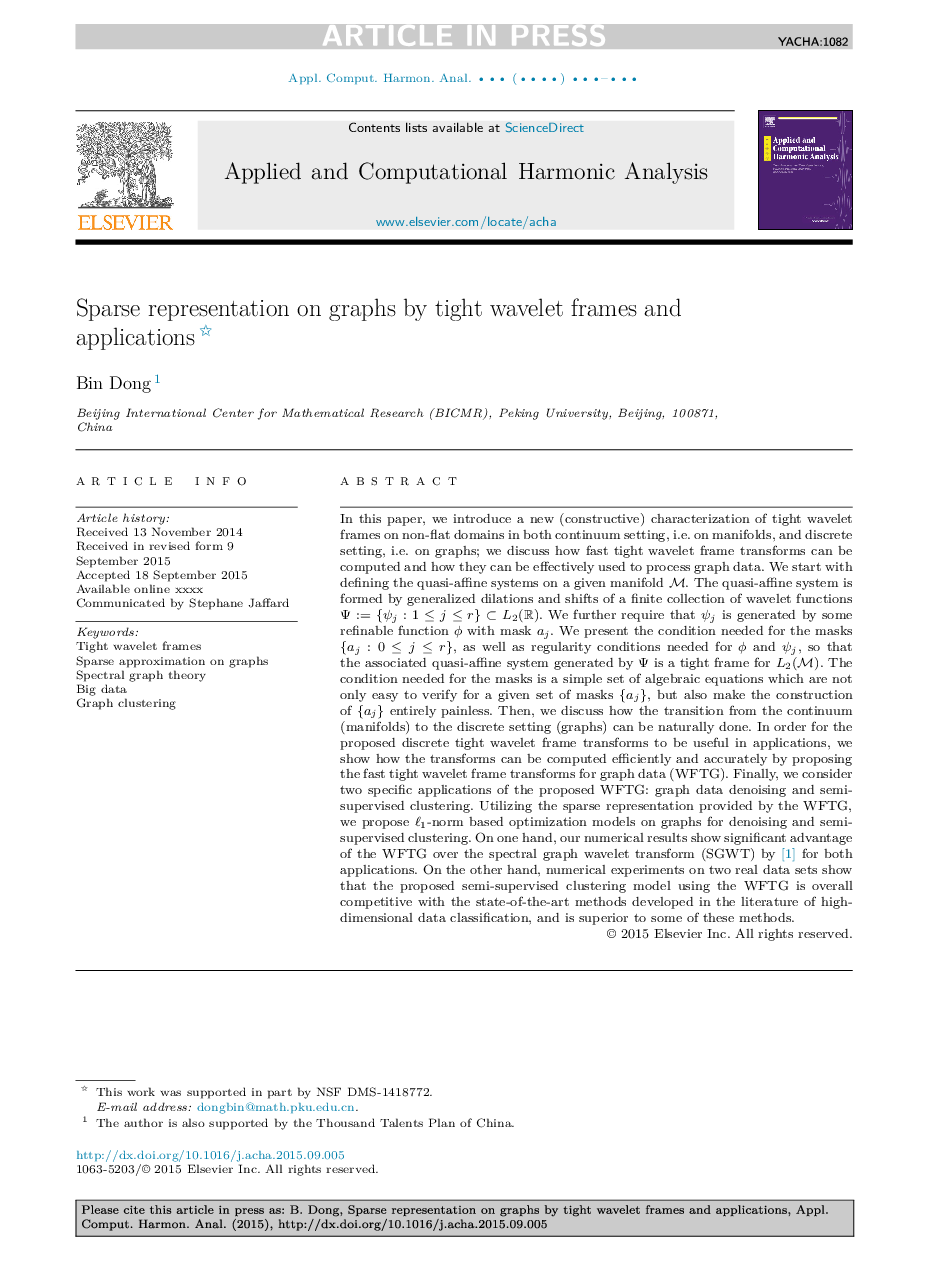| Article ID | Journal | Published Year | Pages | File Type |
|---|---|---|---|---|
| 5773596 | Applied and Computational Harmonic Analysis | 2017 | 28 Pages |
Abstract
In this paper, we introduce a new (constructive) characterization of tight wavelet frames on non-flat domains in both continuum setting, i.e. on manifolds, and discrete setting, i.e. on graphs; we discuss how fast tight wavelet frame transforms can be computed and how they can be effectively used to process graph data. We start with defining the quasi-affine systems on a given manifold M. The quasi-affine system is formed by generalized dilations and shifts of a finite collection of wavelet functions Ψ:={Ïj:1â¤jâ¤r}âL2(R). We further require that Ïj is generated by some refinable function Ï with mask aj. We present the condition needed for the masks {aj:0â¤jâ¤r}, as well as regularity conditions needed for Ï and Ïj, so that the associated quasi-affine system generated by Ψ is a tight frame for L2(M). The condition needed for the masks is a simple set of algebraic equations which are not only easy to verify for a given set of masks {aj}, but also make the construction of {aj} entirely painless. Then, we discuss how the transition from the continuum (manifolds) to the discrete setting (graphs) can be naturally done. In order for the proposed discrete tight wavelet frame transforms to be useful in applications, we show how the transforms can be computed efficiently and accurately by proposing the fast tight wavelet frame transforms for graph data (WFTG). Finally, we consider two specific applications of the proposed WFTG: graph data denoising and semi-supervised clustering. Utilizing the sparse representation provided by the WFTG, we propose â1-norm based optimization models on graphs for denoising and semi-supervised clustering. On one hand, our numerical results show significant advantage of the WFTG over the spectral graph wavelet transform (SGWT) by [1] for both applications. On the other hand, numerical experiments on two real data sets show that the proposed semi-supervised clustering model using the WFTG is overall competitive with the state-of-the-art methods developed in the literature of high-dimensional data classification, and is superior to some of these methods.
Related Topics
Physical Sciences and Engineering
Mathematics
Analysis
Authors
Bin Dong,
